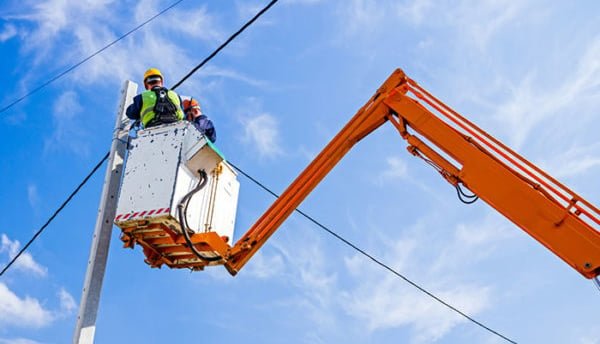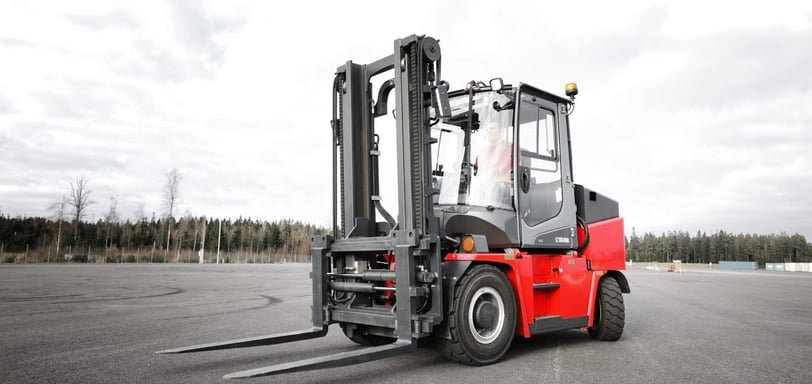Learn Ontario’s OHSA requirements for safe EWP use. Explore CSA standards, training, and best practices for scissor lifts, boom lifts, and aerial platforms.
Elevating Work Platforms in Ontario: Reaching New Heights Safely
Elevating Work Platforms (EWPs), including scissor lifts and boom lifts, enable safe work at height across Ontario industries. This guide explains what EWPs are, where they are used, and how Ontario’s OHSA and CSA standards ensure operators are trained, inspected, and certified for safe, compliant operation.
Introduction: Safety at Height Starts from the Ground Up
Aerial work platforms make working at heights faster and more efficient, but one wrong move can turn efficiency into tragedy.
From construction to maintenance, EWPs are among the most powerful tools on the job site, yet they remain one of the leading causes of serious workplace injuries when operated improperly.
With Ontario’s strict Occupational Health and Safety Act (OHSA) requirements and CSA training standards, understanding how to operate and maintain these machines safely is not optional, it is essential.
This guide will help employers and workers understand their legal duties, certification requirements, and best practices for keeping every lift operation secure and compliant.
What Is an Elevating Work Platform (EWP)?
An Elevating Work Platform (EWP), also known as an Aerial Work Platform (AWP), is a mechanical device designed to raise workers, tools, and materials to elevated work areas.
EWPs can be stationary or mobile, depending on the model, and are equipped with features such as:
-
Guardrails and gates to prevent falls
-
Emergency stop buttons for immediate shutdown
-
Tilt and overload sensors to detect unsafe conditions
-
Platform controls that allow safe and precise maneuvering
Common types include:
-
Scissor lifts: Ideal for vertical elevation tasks like ceiling work and electrical installation.
-
Boom lifts: Offer horizontal reach for construction, painting, and exterior maintenance.
-
Vertical mast lifts: Compact lifts suited for tight indoor spaces such as warehouses and retail environments.
Where Are EWPs Used?
EWPs are found in nearly every major industry across Ontario.
Some of the most common applications include:
-
Construction: Installing cladding, windows, roofing, and signage.
-
Maintenance: Accessing lighting, HVAC systems, or high surfaces.
-
Tree care: Pruning, trimming, and arborist operations.
-
Warehousing: Stock access and overhead inventory checks.
-
Film and television: Reaching elevated lighting or camera rigs safely.
Each use case requires specialized training and inspection to ensure compliance with Ontario’s OHSA and Regulation 851 for Industrial Establishments.
Legislation Governing EWP Use in Ontario
The use of Elevating Work Platforms is strictly regulated under Ontario’s Occupational Health and Safety Act (OHSA) and related safety regulations. Employers, supervisors, and workers each have legal responsibilities to ensure EWPs are operated safely and that only trained and competent operators use the equipment.
1. Occupational Health and Safety Act (OHSA)
The OHSA sets the foundation for worker protection in Ontario. It requires employers to provide information, instruction, and supervision necessary to protect a worker’s health and safety. This includes EWP-specific training, maintenance, and hazard control measures.
2. Regulation 851 for Industrial Establishments
Regulation 851 outlines detailed material handling and machine operation requirements, including pre-use inspections, maintenance, and safe operating procedures for aerial devices. Employers must ensure every EWP is maintained in good condition and inspected before each use.
3. Fall Protection and Rescue Planning
Anyone operating or working from an EWP must use an approved fall protection system. Employers are also responsible for maintaining an emergency rescue plan that can be activated immediately in case of mechanical failure or medical emergency.
Standards and Best Practices for Safe EWP Use
Several recognized organizations provide technical and operational standards that complement Ontario’s legislation:
-
CSA Group: Develops national standards for design, inspection, and training, including CSA B354 series for EWPs.
-
ANSI (American National Standards Institute): Publishes safety standards used across North America and the Manual of Responsibilities, which outlines operator obligations.
-
ISO (International Organization for Standardization): Sets global benchmarks for equipment design and safety management systems.
Employers should ensure that training, inspection routines, and maintenance practices meet or exceed these standards.
EWP Operator Training Requirements
Before operating any lift or aerial device, workers must complete approved EWP operator training that includes:
-
Theory Instruction: Understanding EWP types, hazard awareness, stability principles, and fall protection requirements.
-
Practical Evaluation: Hands-on demonstration of safe operating techniques under supervision.
-
Equipment-Specific Training: Familiarization with the actual model used, including controls, safety features, and limitations.
-
Refresher Training: Required when a worker’s performance indicates unsafe operation, after incidents, or when new equipment is introduced.
Documentation of all training must be retained by the employer and made available to the Ministry of Labour upon request.
Employer Responsibilities
Ontario employers must:
-
Provide certified EWP operator training through a competent provider.
-
Conduct daily inspections and scheduled maintenance.
-
Ensure proper use of personal protective equipment.
-
Implement written rescue procedures.
-
Maintain accurate training and inspection records.
Failure to meet these obligations may result in significant fines, work stoppages, or liability under the OHSA.
Reliable Resources for EWP Safety
Employers and operators can access authoritative resources from:
-
Ministry of Labour, Immigration, Training and Skills Development (MLITSD): Safety Guidelines for Live Performance Industry – Elevating Work Platforms
-
Canadian Standards Association (CSA): CSA Standards Portal
-
Canadian Centre for Occupational Health and Safety (CCOHS): Elevating Work Platforms Safety Guide
Stay Compliant with Achieve Safety
Operating EWPs safely takes more than just skill — it requires certification, confidence, and compliance. At Achieve Safety, our Elevating Work Platform Training programs are designed to meet Ontario’s OHSA, CSA B354, and Regulation 851 standards.
Our certified trainers combine classroom instruction with hands-on practical sessions to ensure operators are fully competent and compliant. Whether you manage construction crews or facility maintenance teams, we help your workforce reach new heights safely.
👉 Book your Elevating Work Platform Training today and ensure your team is trained, certified, and ready to operate safely and legally in Ontario.
FAQs – Elevating Work Platform (EWP) Safety Ontario
Q1. What is considered an Elevating Work Platform in Ontario?
An Elevating Work Platform (EWP) is any powered device that lifts workers, tools, or materials to perform tasks at height. Common types include scissor lifts, boom lifts, and vertical mast lifts. All EWPs must meet CSA B354 design and performance standards.
Q2. Who can operate an EWP in Ontario?
Only workers who have completed approved EWP operator training and demonstrated competency may operate an elevating work platform. Employers are responsible for ensuring that every operator holds valid training and understands site-specific hazards before using the equipment.
Q3. What training is required to operate an EWP?
EWP training must include both theory and practical instruction. It covers hazard awareness, fall protection, stability principles, inspection procedures, and hands-on evaluation of the specific lift model being used. Refresher training is required after incidents, equipment changes, or observed unsafe operation.
Q4. What legislation governs EWP use in Ontario?
The Occupational Health and Safety Act (OHSA) and Regulation 851 for Industrial Establishments outline employer duties, inspection rules, and maintenance requirements. Additional guidance is found in CSA B354 standards and MLITSD safety guidelines.
Q5. Is fall protection required when using an EWP?
Yes. Workers must wear a full-body harness with a lanyard or self-retracting lifeline attached to an approved anchor point whenever the platform is elevated. Employers must also have a rescue plan ready to respond quickly in the event of equipment failure or a medical emergency.
Q6. How often should EWPs be inspected?
A pre-use inspection must be performed at the start of every shift, and a thorough annual inspection should be completed by a qualified mechanic. Records of all inspections and maintenance must be kept on file for review by the Ministry of Labour, Immigration, Training and Skills Development (MLITSD).
Q7. What are common hazards when using EWPs?
Typical hazards include tip-overs from uneven ground, entanglement with overhead objects, electrical contact, overloading, and falls from height. Proper site assessment, guardrail use, and adherence to load limits prevent most of these incidents.
Q8. How can Achieve Safety help Ontario businesses stay compliant?
Achieve Safety delivers CSA-compliant Elevating Work Platform Training that meets Ontario’s OHSA and Regulation 851 requirements. Our instructors provide classroom and hands-on certification that equips operators with the knowledge to work safely, legally, and confidently.






